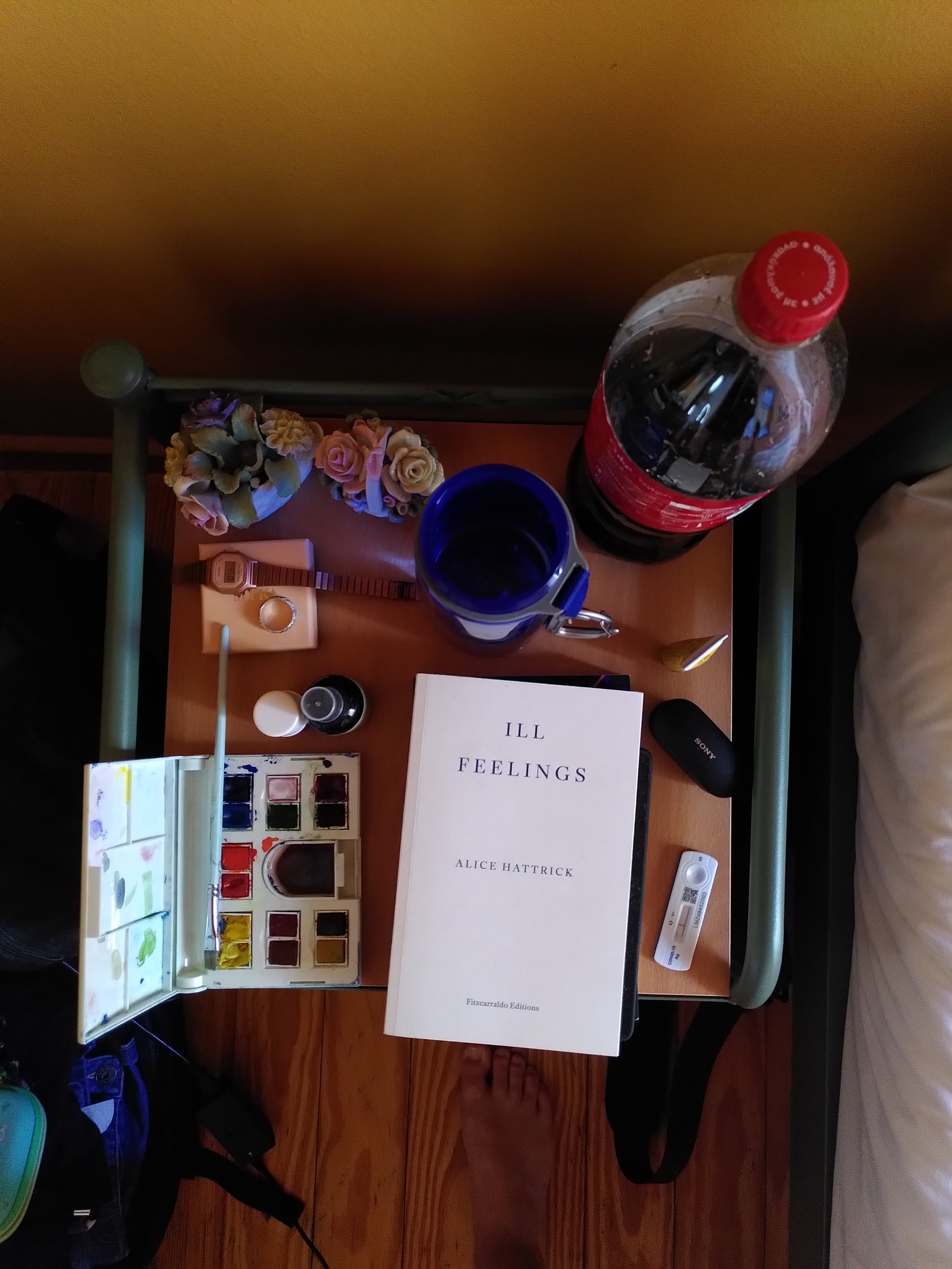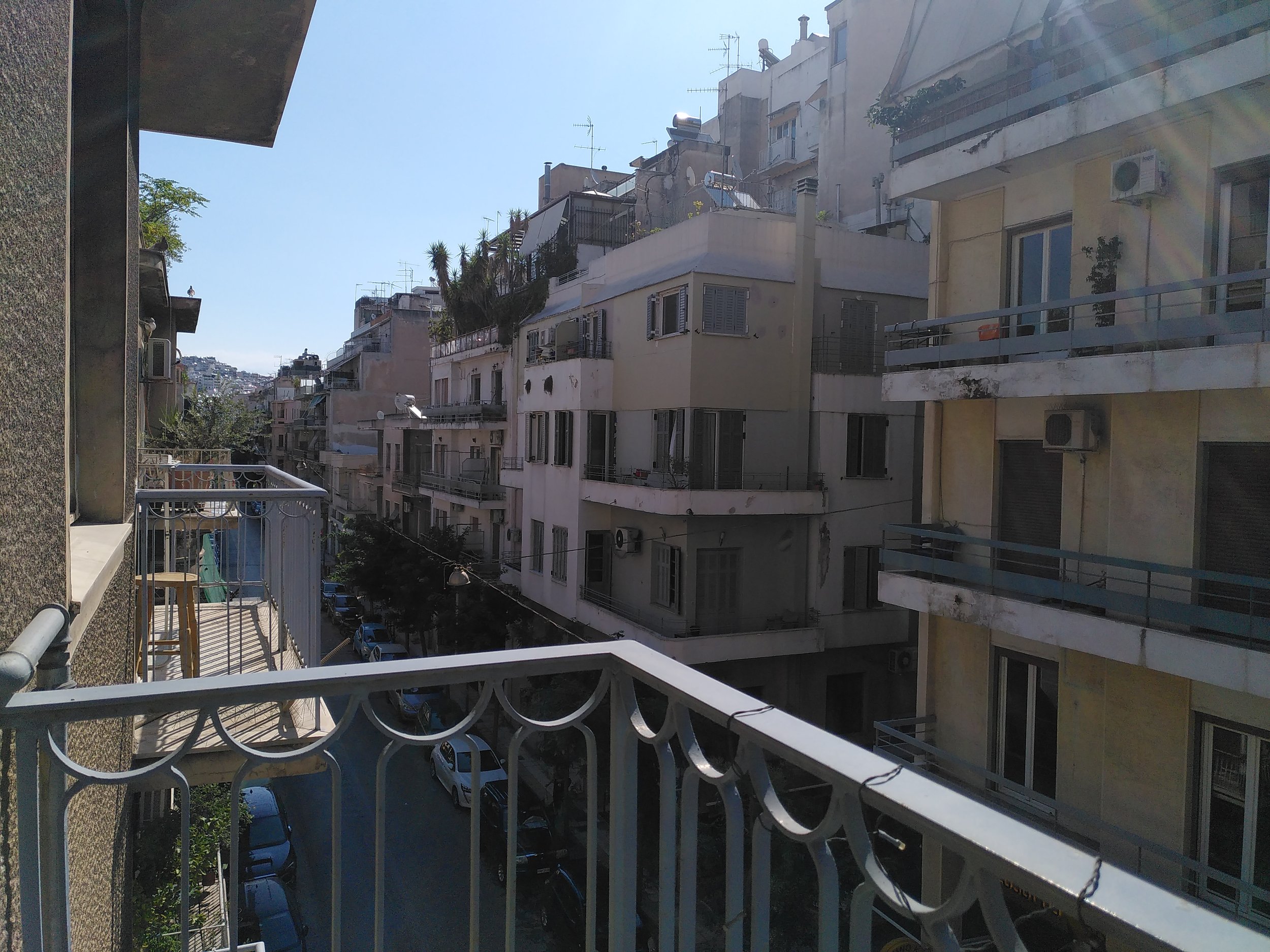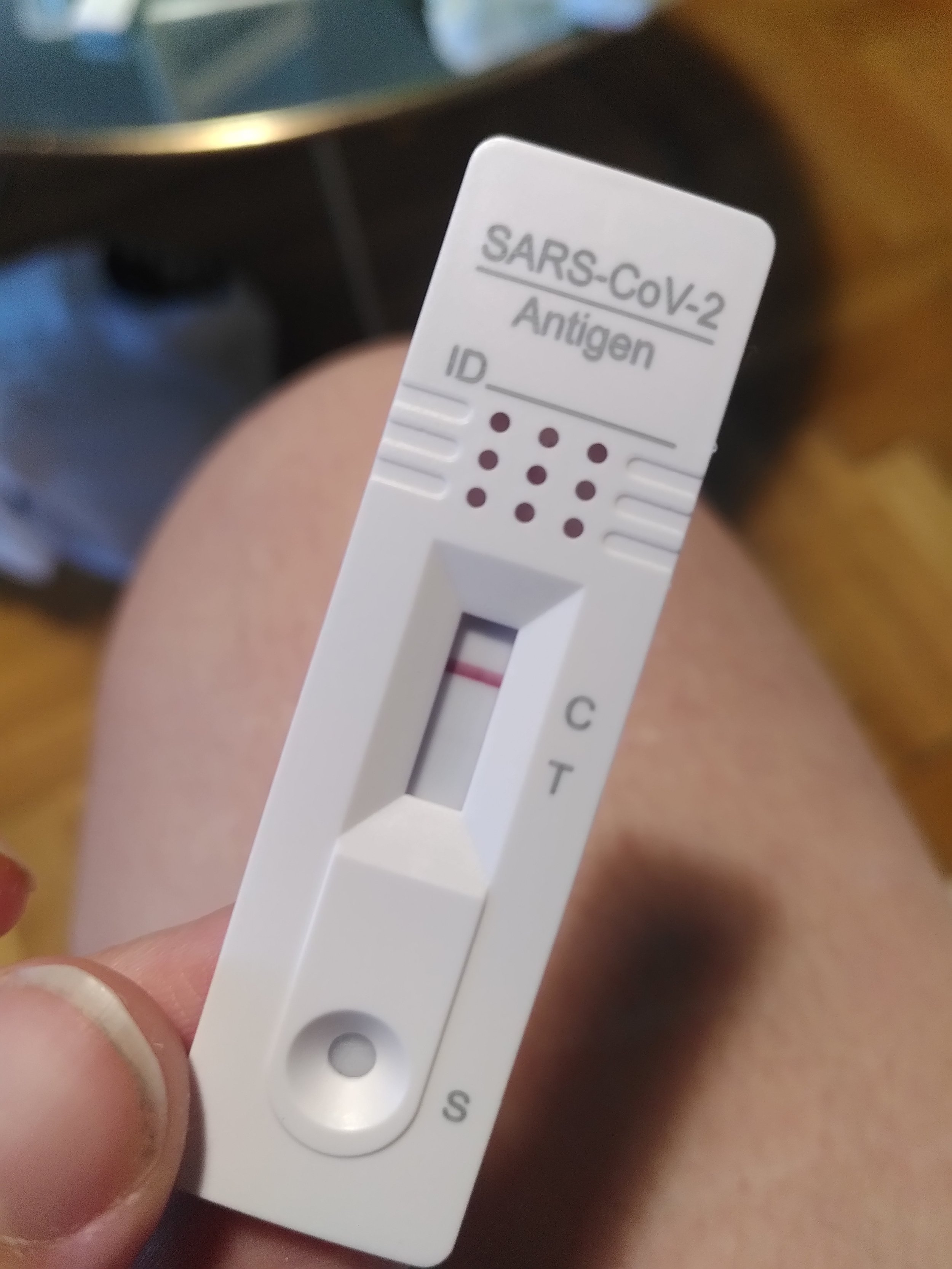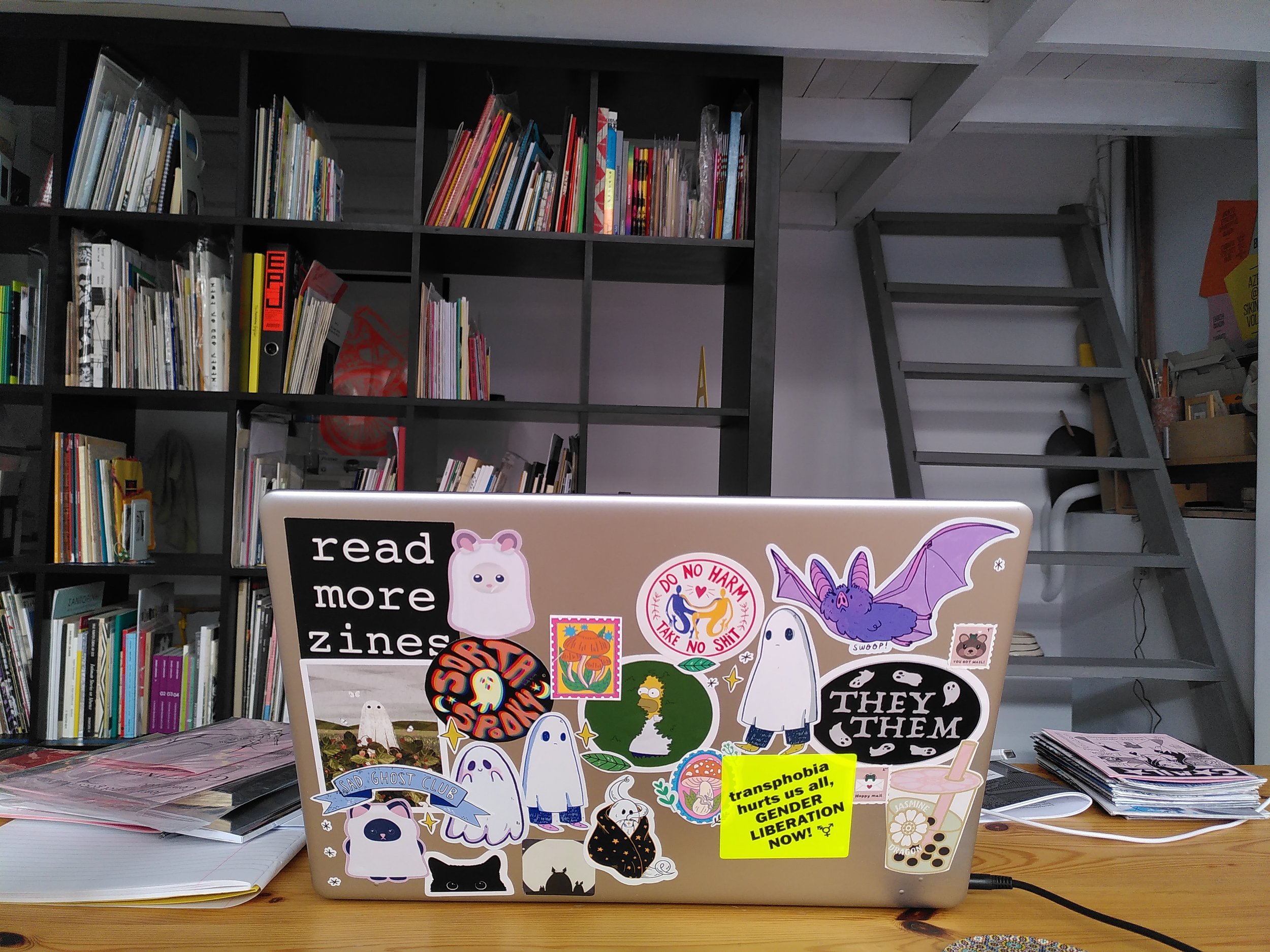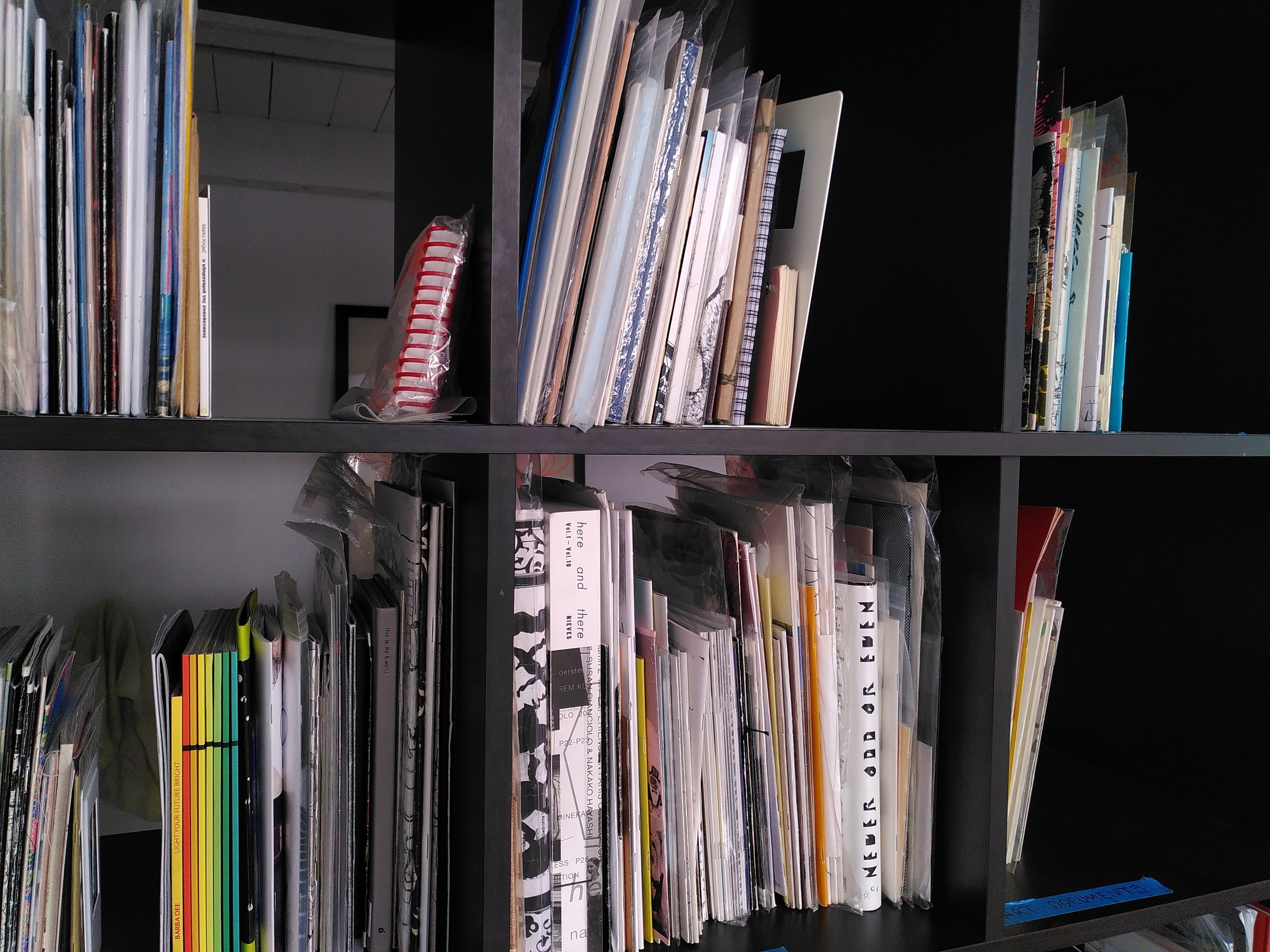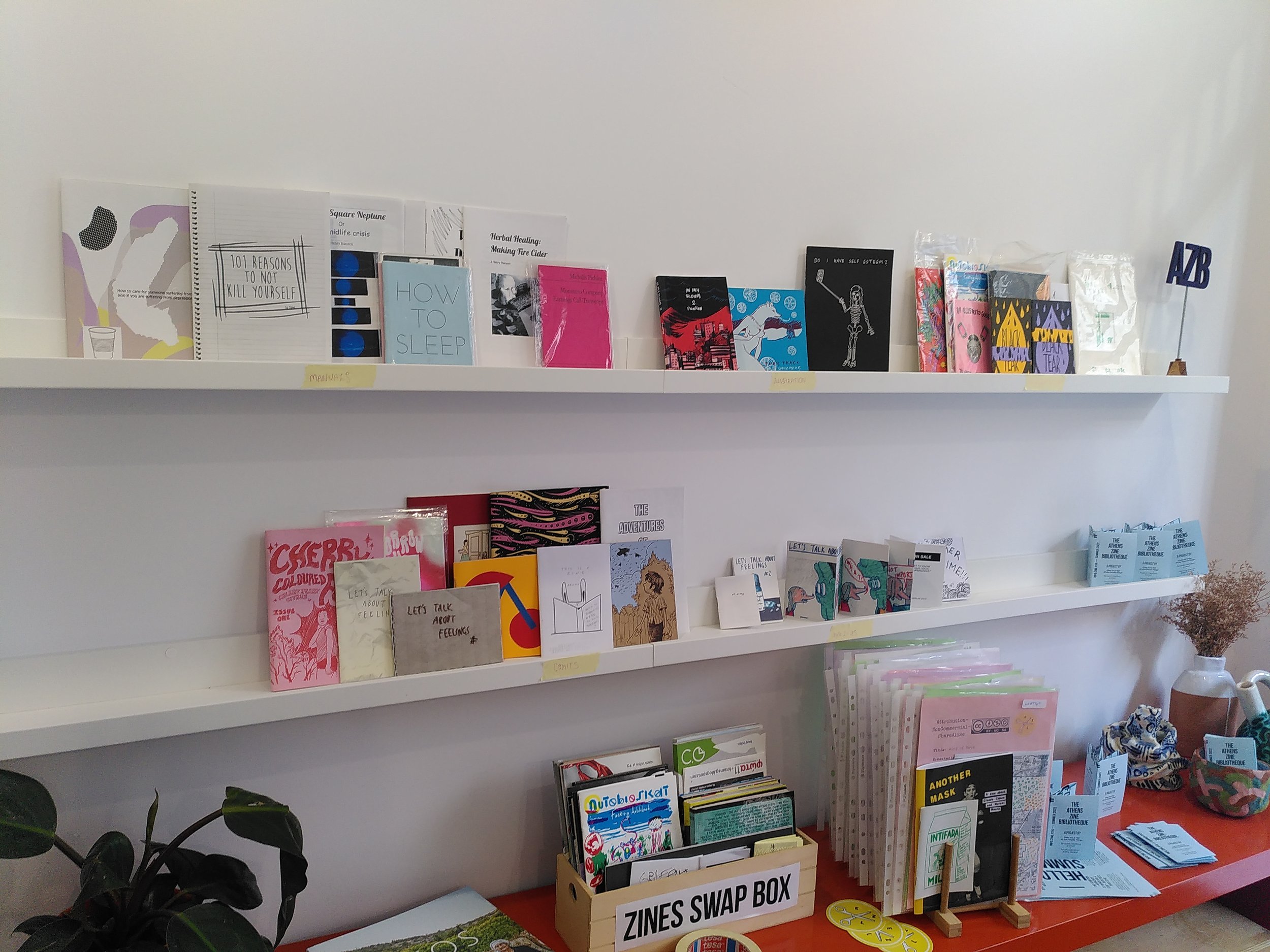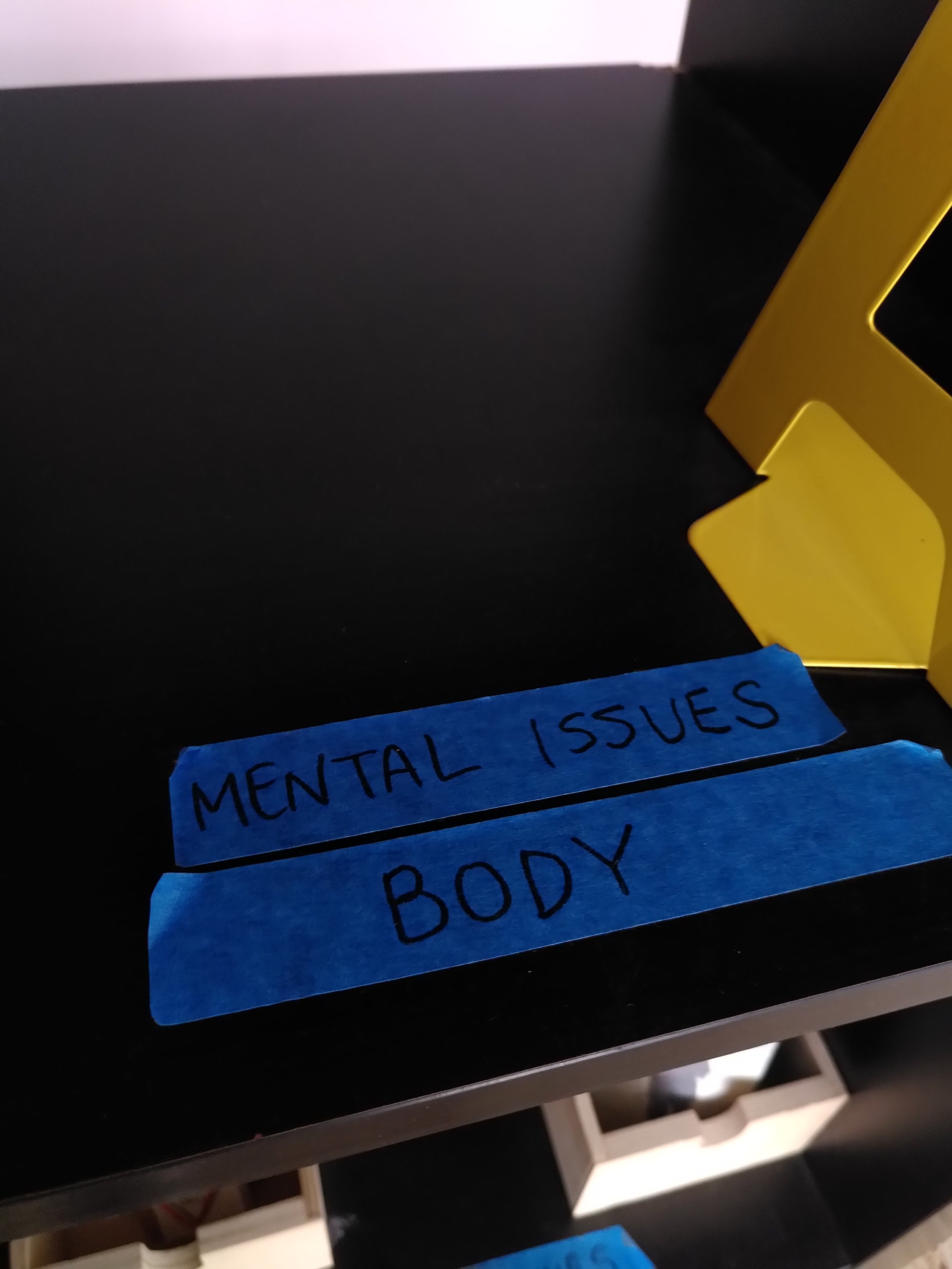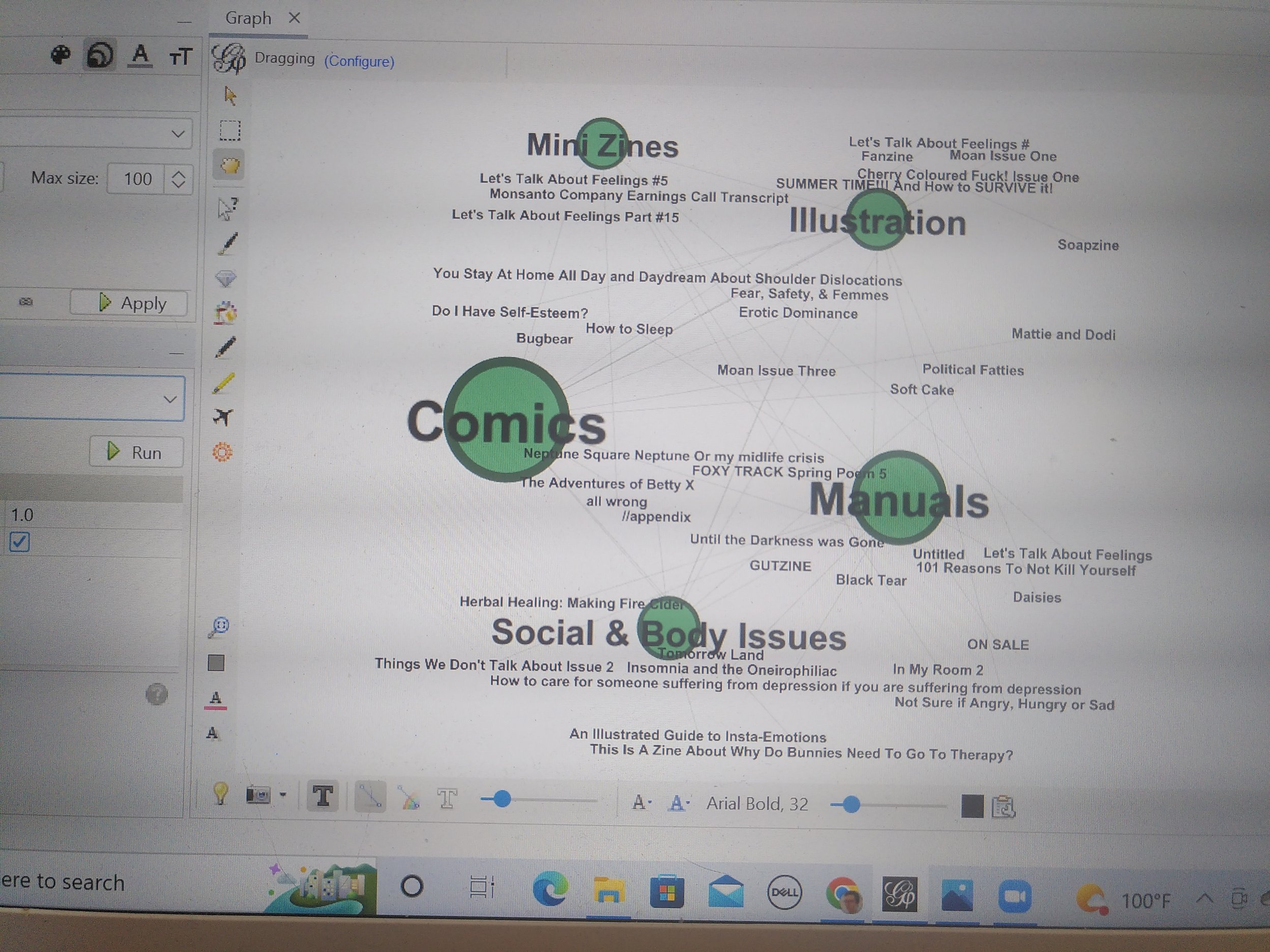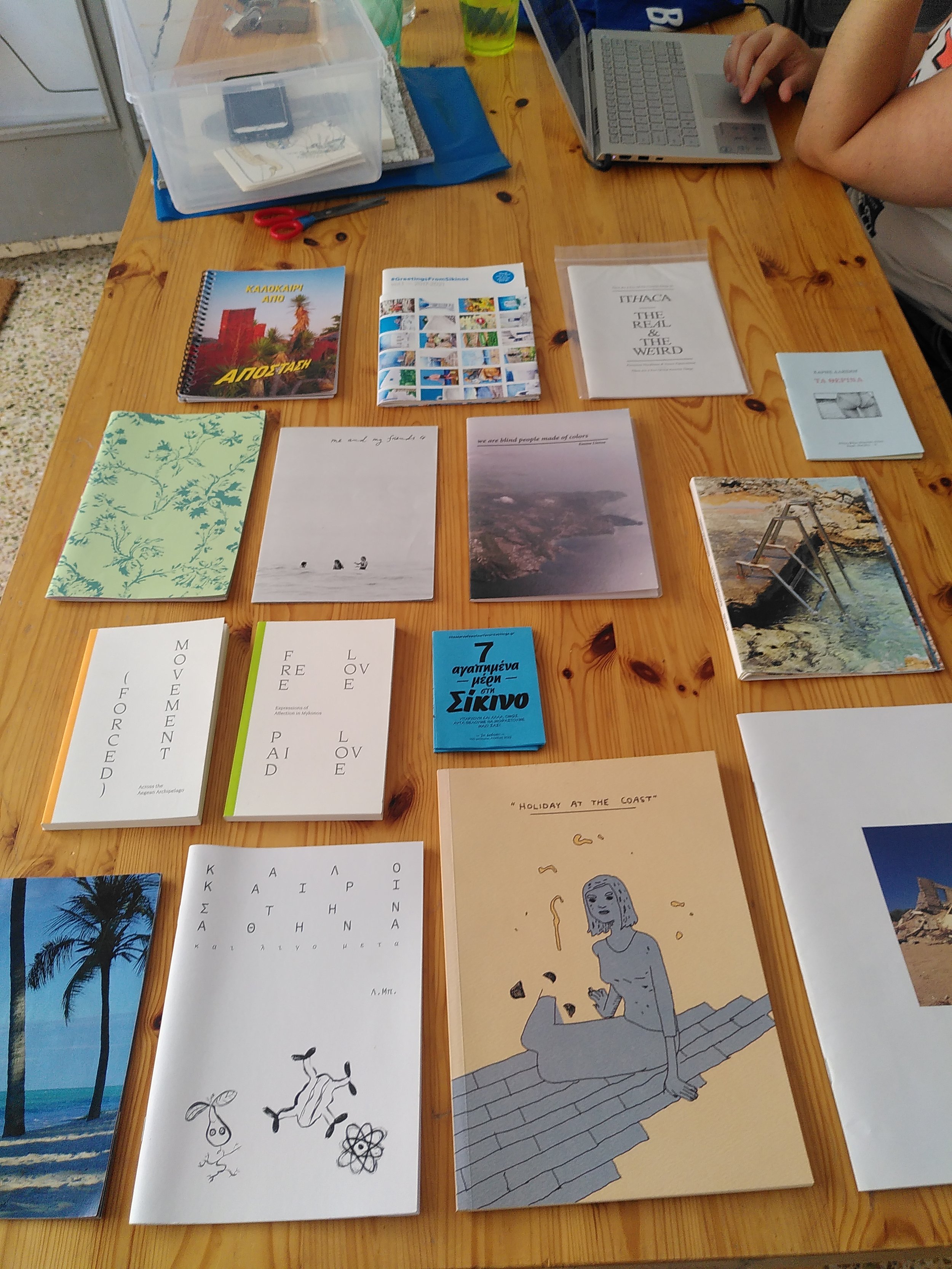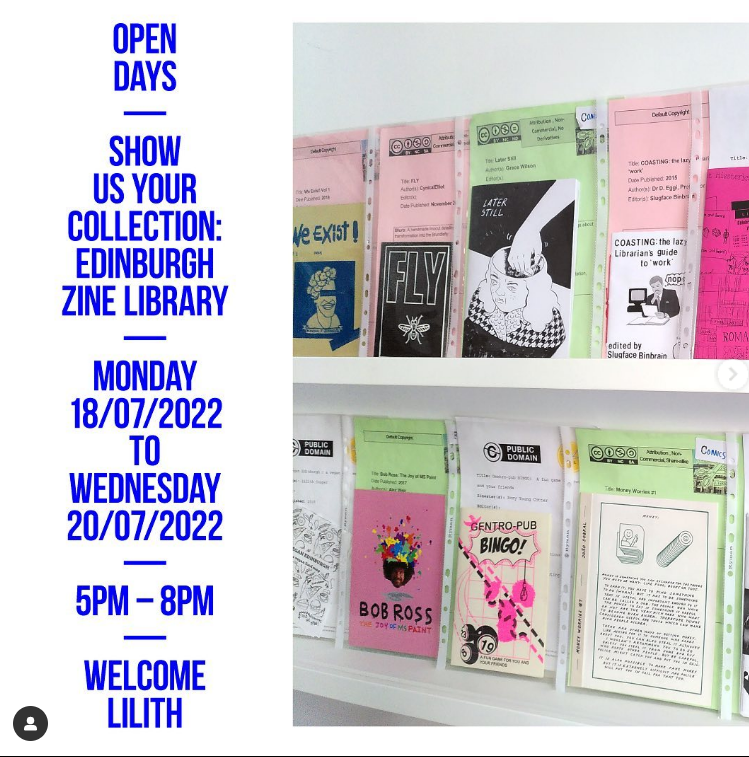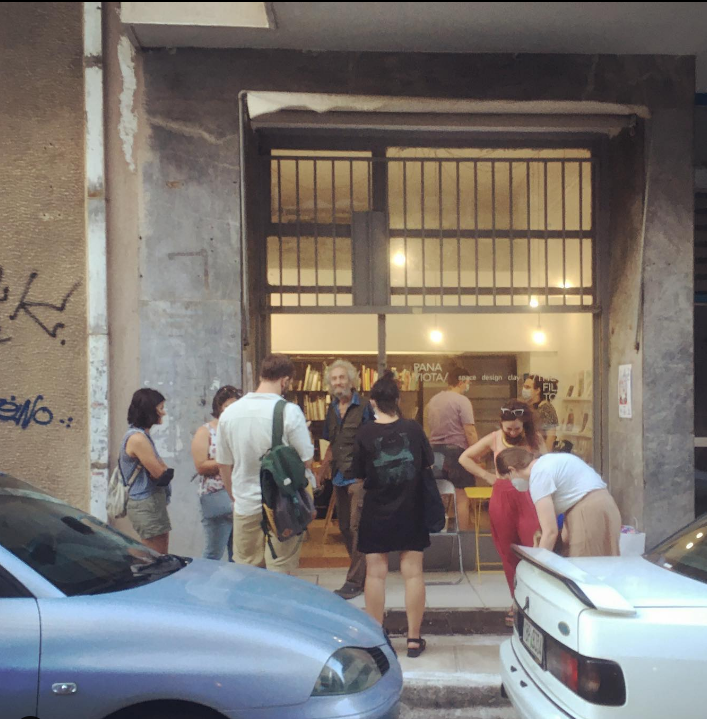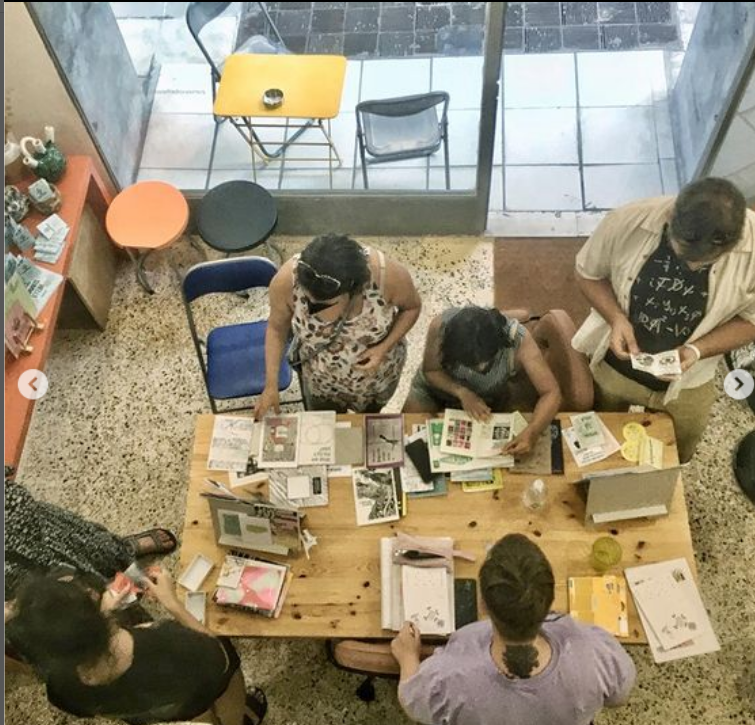Athens Zine Bibliotheque
In July 2022, I left Fife for a month-long placement, supported by CHASE, at the Athens Zine Bibliotheque. This blog is a quick run through of the experience and some reflections, in advance of the zine I’m (slowly) assembling from my time there.
I first spoke to Panayiota and Tassos, the dream team behind the Athens Zine Bibliotheque, when I was part of the organising group for the virtual International Zine Librarian (un)Conference that ran in October 2020. Watching their video tour of their space and the zines, and chatting to them afterwards, I vowed to make it there one day - but in late 2020 that seemed like a far off possibility. When I learnt about the CHASE placements, and the fact they could offer financial support for some of the costs of international placements, and feeling more confident about Covid (perhaps ill placed confidence in retrospect) I decided to try and make it happen!
I travelled to Athens with my partner Abi, who is a student nurse and who (in something perhaps more than coincidence) had her four week summer break over the same period of my placement. The trip didn’t start as planned - despite testing every day in the lead up to leaving, the day after we arrived I tested positive for Covid-19. I had picked it up at an event at the weekend just before (I was masked, but many weren’t and both me and my masked tablemate went down with it along with several other attendees we knew). Abi tested positive three days later. We were both glad that we had at least worn well fitted N95s for the entirety of our travel. Though Greece’s government was consistently prioritising tourist trade over the health of its citizens, and as a result self-isolation rules were short, we stuck to the 10 day/2 consecutive negative tests after 6 days rule. Emerging after our period of isolation, into the heat and busy unfamiliar streets was disorientating, and both of us felt Covid’s effects long after we had ‘recovered’. Panayiota and Tassos were both so caring and checked in on us regularly, and we were lucky to have friends in Athens at the same time as us who delivered food, juice and painkillers. Whilst I was able to make up some of the lost time on placement, I did have to adjust my plans and expectations a little. All the advice is to aggressively rest post-Covid, to reduce the risk of prolonged symptoms or developing Long Covid. I find rest hard generally, and I found it hard to figure out how to do this in a new city. My particular and unique sadness is that my heart rate stayed really high long after most of my other symptoms went away, so I never got to lean into drinking freddo espresso. But, my heart rate still isn’t back to normal so I should maybe address my priorities.
Athens Zine Bibliotheque is a library of zines, small editions and other self-published or small press works, based in Athens. It was founded in 2014 - it started as one of eleven projects chosen for the 2nd cycle of the "Traces of Trade" initiative , which took place at the Merchants' Gallery in Syntagma, between December 1, 2014 - June 15, 2015. AZB is curated and organised by Panayiota and Tassos, the team behind These Are A Few Of Our Favorite Things. The library has probably 900 zines and others editions, and about 150 related magazines and books. AZB currently occupies a studio space in a mostly residential area, with a Pan Asian supermarket opposite where I ended up buying many packets of noodles for easy lunches on the small portable hob that P&T set me up with. Compared to where we were staying, just off the busy street of ιπποκρατους (Ippokratous), it is very quiet. The zine collection is housed in the large square bookshelves visible in the photographs above. They were organised into very broad categories, often using either form or genre: fanzines, comics, art zines, photography, how-to guides, social issues, mini-zines, with some distinction between Greek and English language zines. The categories are much broader than those we use at Edinburgh Zine Library, where we predominately use the subjects of zines to decide where to put them, and can often end up with just one zine in a category as specific as Birthdays (although we also have some broader categories like comics or perzines). Panayiota and Tassos’ interest in photography, architecture and graphic design is visible, but there are zines touching on a huge range of topics.
The broad remit of my placement was around the kind of interface between the zine collection and it’s visitors. As much as I was interested to read and think about the zines myself as a library visitor, I was also interested in different approaches to a public facing library. So I started thinking about how people were using the collection, and crucially, how they were navigating or orientating themselves in it. I think it’s really interesting considering the differences between, say, how I find my way through the zines at Wellcome Collection - where I’m using an online catalog to pre-order a fixed number of zines - and how I find my way at Edinburgh Zine Library - which I know so intimately - and how I find my way at a new “open-shelve” zine collection like Salford Zine Library or AZB, where I feel like I can lean much more into impulse, and desire, and allow the archive or collection to make unexpected associations for me, to bring things into my proximity. I wanted to think about this way of feeling my way through a zine collection, whilst at the same time I wanted to think about how someone might be guided along a particular path, based on an interest or theme or whatever. One of the results of the broader grouping of zines I described earlier is that topics are dispersed across the AZB. When I asked where to return a given zine to, Tassos captured the fluidity of the collection: since they have no written catalogue, it is (in some sense) up to me! Around the same time I returned to the AZB to start work post-Covid, Tassos started assembling zines to take with him to an AZB pop-up in Kavala. He selected 20 zines related to “The Sea” for a workshop they’d be running whilst they were there (demonstrating the recognisable intimate knowledge of a zine collection you have in some part created). This bringing together of zines on a theme from across the different categories in the library made me curious about how I could document or trace or map how a particular theme runs through the collection, and I suppose more significantly how I could make this theme or subject visible to users of the library, how I could guide them through it. I started with the 20 sea-themed zines that Tassos had assembled for the Kavala exhibition. Using advice from Cassandra Hradil, who created the beautiful zinenet.work visualisation of the Barnard Zine Collection, I downloaded Gephi - an open-source graphing software - and then spent some time googling: “what are nodes?”; “what are edges?”; “gephi for beginners”. Thankfully the internet obliged. I’m going to describe what I did briefly here but if you have any knowledge of the subject please move onto the paragraph after as I can already feel you wincing on the other side of the screen.
So Nodes are the dots on the graph, and Edges are the connections between them. I created two tables in excel - one for nodes and one for edges. The nodes table had the headings “ID”, “Label”, and then a couple more columns for different attributes so I had space to add ‘tags’ which were more detailed descriptions of the subject, theme or content of the zine, the form of the zine, the language the zine was in etc. The ID was just a number (from 1 down) and the Label was the zine title. Once I’d put in all the zines, I decided I wanted the different themes of the zines to be their own nodes (so for example I could have a dot labelled ‘Bodies’ and then connect several different zines about bodies to it). So underneath the 20 zines, I listed all the themes as they came up. They all had an ID number, but I didn’t add any other attributes to them apart from the ‘What’ where I put theme (as opposed to zine), and in the first theme column I repeated the theme (which made a difference when colour-coding the graph). The edges table describes the links between the nodes. So say a zine has a particular theme, and the zine’s ID is 7 and the theme’s ID is 29, then it would be 7 in one column, 29 in the next, and then “Undirected” in the last to show how it’s not important what direction the connection goes in. You can also weight connections, but I didn’t want to overcomplicate it to begin with.
My first result was chaotic to say the least - (you can see it here)! I tried to include too much information in the visualisation, and whilst I liked that you could, say, click on mini-zine and trace the mini-zines, in this small sample it was just too busy and not user friendly, and wasn’t going to scale up at all. The second version, which focuses solely on the themes that come up in the sea zines, was far more successful - stay tuned for a public version of it which you can explore.
After feeling my way through the process with the Sea Zines, I decided to move to something a little more ambitious which was looking at where zines about health turned up in the AZB collection. As I went through each category pulling out zines (very broadly) around health, I also pulled the occasional zine of interest on another angle or topic. These created what I’m describing as the constellations of zines that make up my final AZB zine, and which explore different ways individual researchers, readers, librarians, library users, can map a zine collection.
Whilst working away on this mapping, I also hosted a pop-up of some of Edinburgh Zine Library’s zine collection, which had taken up half my suitcase on the way over. It was so pleasurable to meet new people and chat zines and share some of the Edinburgh Zine Library’s zines. Although zines are international, they are also often distributed in very geographically specific ways, so it was really interesting to explore the different geographies of the AZB collection and to bring it in conversation with Edinburgh zines.
I have loads more to say, of course, but this was only meant to be quick summary blog so I’ll leave it there - stay tuned for the zine (which I should have finished before christmas….)
Last thing! My experience at AZB was so valuable and enjoyable because of the kindness and generousity of Panayiota and Tassos, who were so kind and trusting and accommodating. It was a pleasure getting to know them, having the opportunity to talk about zines and all sorts. If you’re ever in Athens I recommend looking them up, and you can also donate your zines to the AZB collection here!

